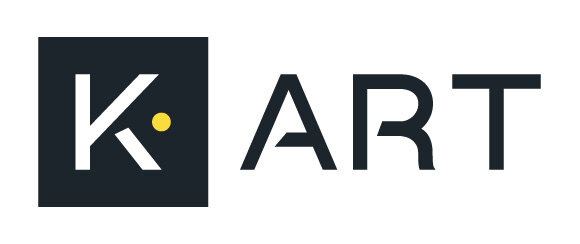The Feathers are Implied
Can you please introduce yourself and what you do?
My name is Frank Buffalo Hyde. I am Onondaga, Beaver Clan, from Central New York. My father is Nez Perce. I was born in Santa Fe, New Mexico, and I grew up equal time in New York and New Mexico. During the school year, I was with my mom, Onondaga, and summer times in Santa Fe. I got a really well-rounded view of Indigeneity from the traditional side in Santa Fe, where it's kind of like the realm for Native artists. It is the place where people go to see and be seen and establish their careers.
I've been making work "professionally" for over 25 years, but where I come from, everyone is good at art, and I think that is true for most Indigenous people. Everyone is good at something, and we don't separate our art from our lives. Growing up, I was surrounded by cousins and uncles that were really great painters, musicians, sculptors, but when I was a young person, I didn't want to be an artist. I was going to be a rock n' roll star. Sooner or later, I started doing more and more art, and I knew I needed to get recognized.
When I started, I was looking for work that identified and spoke to my experience as a contemporary Native person, and I really didn’t see it. Most of what I saw in magazines and galleries was very decorative and still very noble savage imagery - very commercial, easily digested, and Saccharin. So, when I started making work, first of all, I was trying to hone my skills, and second of all, I was trying to represent a contemporary Indigenous reality that was more true to my own experience - not just fragmented in two realities but in many realities. And so I set out to make that work.
To this day, I make paintings that I would like to see, and even if I didn’t make the paintings that I do, I’d still enjoy seeing them. If it passes my own scrutiny as a viewer and as an artist, then I’m sure it’ll be interesting to somebody else. That’s sort of the rules I live by.
What different ideas do you pursue in your work?
What people point out most in my work is the pairing of traditional images - images that have become iconic in Indigenous artwork - with technology or other items from now. When those things come together, I think it really resonates with them for whatever reason because it's kind of a shock. Most people go through their lives without ever knowing an Indigenous person. To see one making art and then having the images existing in the same plane as a video game or a cellphone is mind-blowing for viewers. They still have these ideas of what Native art is and what Native people look and act like.
Ya know I've been [making work] long enough where my themes and concepts are trickling into another generation. It's ironic on one level, but it's heartwarming to hear my words coming from somebody else's mouth and my ideologies coming from another artist's mouth. It's great. It means that all these years, somebody was paying attention cause as an artist, you really don't know if you are affecting anybody from your studio. When you hear these younger artists talking about the same thing you've been talking about, it feels really good. It's heartwarming, ironic, and weird at the same time.
Two of your pieces in this upcoming exhibition, Virtual Sovereignty #3 and #4, show Native individuals covered in a virtual headset. What was your approach to this subject like?
Yes, virtual reality. It's sort of the next step in-home gaming entertainment. It's gone from the very beginnings of Atari and home computers to PlayStation 5 and now virtual reality (VR). It's amazing. We now have VR game consoles, and it's just like being in a movie. I mean, you can get lost in there for hours and hours.
Like social media, it's pretty unregulated at this moment. I was drawing parallels between social media, the internet, and VR as the new Wild West where there's a lot of positive things going on [like] information sharing and keeping people safe. But on the other side of that coin, there are a lot of black- market happenings; people are finding an alternate way to manipulate technology for their own benefit.
The images that I use in this series are very deliberately chosen - Edward Curtis images. Those images are so overdone. They're posed and not really real, but they're accepted as the Indigenous iconography for North America. If you hear Edward Curtis, we all know what you're talking about. I'm reappropriating the appropriation - I think of it like laundering money. Instead, I'm laundering these images and providing context.
I think about weird things like that. My work goes through social media and technology to the paranormal to cryptozoology and aliens. Not yet serial killers, but I do want to do a serial killer series at some point.
Virtual Sovereignty #4, 2021
That sounds awesome! I look forward to that series. Is there a particular reason why you gravitate towards cryptozoology and these abstract characters?
Well, they're real, man. “He laughs.” They're not abstract - Bigfoot is real! You've got to believe.
First of all, I have to thank my older sister. Do you know how your older siblings are always cooler than you? She played guitar before I did; she listened to cool music before I did; she painted and drew before I did. We always watched these crazy movies, and that's where it started as a kid.
I gravitate to them also because there is a parallel between them and [the unexplained]. Growing up, if someone found out that you were Native, they were shocked. Then the next thing they wanted to do was touch your hair. And then they wanted to know if you still lived in teepees and still ate buffalo. When people find out that you're Native, it's like seeing Bigfoot. It's risen to the same level of hysteria, but the difference is that we have actually been here forever. I think Indigenous people can identify with that shock and amazement when people find out that you're Indigenous.
People are always like, "Oh, my, God can I get a picture of you?!" I don't know if it happens more or less (now), maybe more 'cause everyone has a cellphone - but I use those cryptozoology references to comment on how Indigenous people have been fetishized as an unexplained entity of long ago. It's weird being on the Bigfoot side when people are pointing at you and taking pictures of you.
I also just like it's a part of me.
When I started [making work], a big hurdle of mine was asking, "What is contemporary Indigenous art?" "Am I making it?" "Do I have a responsibility to make it?" "Who's holding me to that responsibility?" That is a lot to deal with as a [then] younger 20-something artist, and I got tripped up on that.
For me, instead of hiding from those things and sugar coating, I went straight into it and answered what Indigenous art was. For many, it's just portraits of dead Natives, black and white pictures, and that's as far as it goes, but in there, I found something else where you have an accountability for the artists coming behind you. I'm working to make their ideas a little more free artistically so they don't have the hang-ups that I had to go through. This is contemporary Native art because I made it. That's it.
In 2019 I had the biggest breakthrough mentally and artistically. I started referencing my own trauma. White artists do that all the time. That's what they're taught to do in school - reference your own trauma. But I was so shackled to think that all my marks had to something with cultural meaning and had to be, ya know, Indigenous knowledge of some sort.
Once you allow yourself to get out of the way of your own creating, then a whole other level of possibilities opens up. That's what happened in 2019. I've allowed myself and given myself permission to create work that maybe doesn't make sense and doesn't fit into any of my [previous] series, and that's awesome. Once you become an "established artist" - whatever that means - everyone gets roped into their product and their brand and only makes [small variations]. I get it - I'm a father, and I got bills to pay too. I do that, but I also do other things.
You're right. I fear that, for a lot of artists, once they find an established platform, they're expected to produce the same results as what sells. It can become difficult to experiment again - simply because much of the audience won't necessarily gravitate towards [newer work]. Then, all of a sudden, you've been boxed into creating one part of your art.
Absolutely. I've had people say it to my face. [In] that show in 2019, there were only two paintings that had any sort of reference to feathers or a headdress. This guy [who] had been there a while and probably had a drink in him came up to me and [asked] "where are all the Indians in these paintings? Where are all the feathers?!" I said, "I'm the Indian in these paintings, and the feathers are implied." Everyone around me laughed and cheered. He laughs. His face turned red, and he walked away.
Ya know, people don't feel uncomfortable asking that to an artist - even to their face - just because they have these set ideas of what [Native art] is and what they want to see - what they demand to see. I don't think he was planning on buying anything - most people just go to the openings for the free booze. So, I benefit from the consequences and reap the rewards of the choices that I make in my career, and I made a big conscious choice to move forward, whatever that means.
Frank Buffalo Hyde's first solo exhibition in New York and on Haudenosaunee land Reservation for One opens June 10th at the K Art gallery. Join us and the artist from 6 pm - 10 pm.



